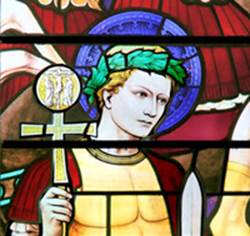
A Song for Beds, Herts and Bucks
Watford Folk Club's songwriting competion entries of 2012
BackSaint Alban
By Chris Flegg

Way to GoThe plans for the HS2 High speed railway 2012 |
|
The Banks of the BeaneThe drying up of the River Beane over the last 50 years |
|
The Great Ouse and the ColneThe story of the White family over 3 generations |
|
The Hatter GirlsThe Luton Hatting Industry 1610-1965 |
|
The Hertfordshire GuardsThe third Battle of Ypres, (Passchendaele) July 1917 |
|
Chartists Ballot 1846The Chartists Ballot of 1846 |
|
James("Robert")SnooksThe last Highwayman hanged in England 1761-1802 |
|
Begone! The Witch of WalkernThe trial of Jane Wenham 1712 |
|
The Headless HorsemanThe headless horseman of Pirton |
|
Destined to lie with the KingThe story of William Dormer of Wing |
|
St AlbanSt Alban - Martyred 22 June 209, c.251 or 304 ? |
Old Time TimTo Tim Brooks' Home Page |
|
|
Words and melody copyright © 2012 Chris Flegg
About Chris
Chris Flegg is based in St Albans, Herts and not only plays jazz guitar with his own jazz trio but is also a singer songwriter on the acoustic and folk scene with four albums of original songs to date, the latest being Gazing At The Stars All Night. Chris mainly performs locally in St Albans with sax and bass in a jazz context or solo as a singer guitarist. He runs a jazz jam session and enjoys charity busking in support of the British Heart Foundation. For more details, see the Chris Flegg page at Pat Tynan Media.
About this Song
St Alban takes the story of how St Alban was martyred and adds thoughts on how he is still remember in the City of St Albans where the distinctive blue and white flag of St Alban flies proudly above the cathedral that bears his name.
Alban: Britain's first Christian Martyr
A man called Alban, believed to have been a Romano-British citizen of the Roman town of Verulamium around the end of the 3rd century, gave shelter to an itinerant Christian priest, later called Amphibalus. Impressed by what he heard Alban was converted to Christianity by him. When a period of persecution, ordered by the Emperor, brought soldiers in search of the priest, Alban exchanged clothes with him allowing him to escape and it was Alban who was arrested in his place. Standing trial and asked to prove his loyalty by making offerings to the Roman gods, Alban bravely declared his faith in "the true and living God who created all things". This statement condemned Alban to death. He was led out of the city, across the river and up a hillside where he was beheaded. As with all good stories the legend grew with time. Bede, writing in the 8th century elaborates the story, adding that the river miraculously divided to let him pass and a spring of water appeared to provide a drink for the saint. He also adds that the executioner's eyes dropped out as he beheaded the saint, a detail that has often been depicted with relish since. At the time of Bede there was a church and shrine near the spot, pilgrims travelled to visit, and it became an established place of healing. He describes the hill as "adorned with wild flowers of every kind" and as a spot "whose natural beauty had long fitted it as a place to be hallowed by the blood of a blessed martyr". There is an even earlier record of St.Germanus visiting the shrine around 429. Alban was probably buried in the Roman cemetery to the south of the present Abbey Church. Recent finds suggest an early basilica over the spot and later a Saxon Benedictine monastery was founded, probably by King Offa around 793. This was replaced in 1077 by the large Norman church and monastery, the remains of which are still partly visible in the tower and central part of the present cathedral.